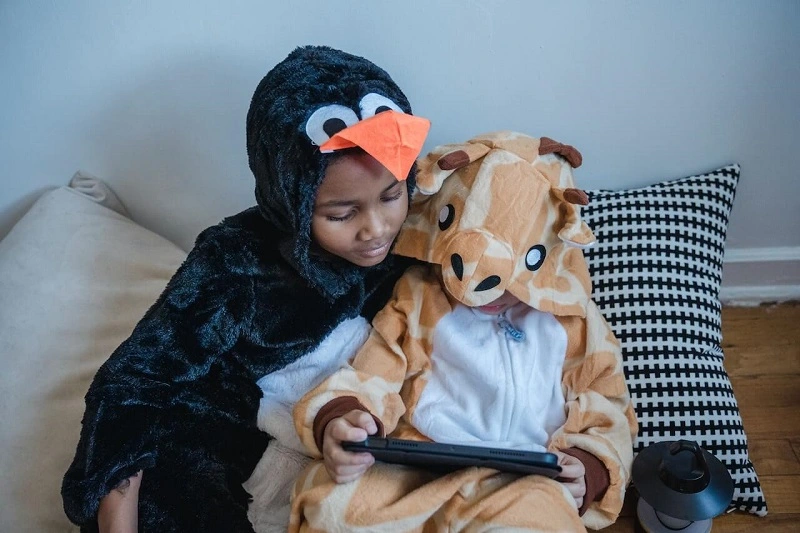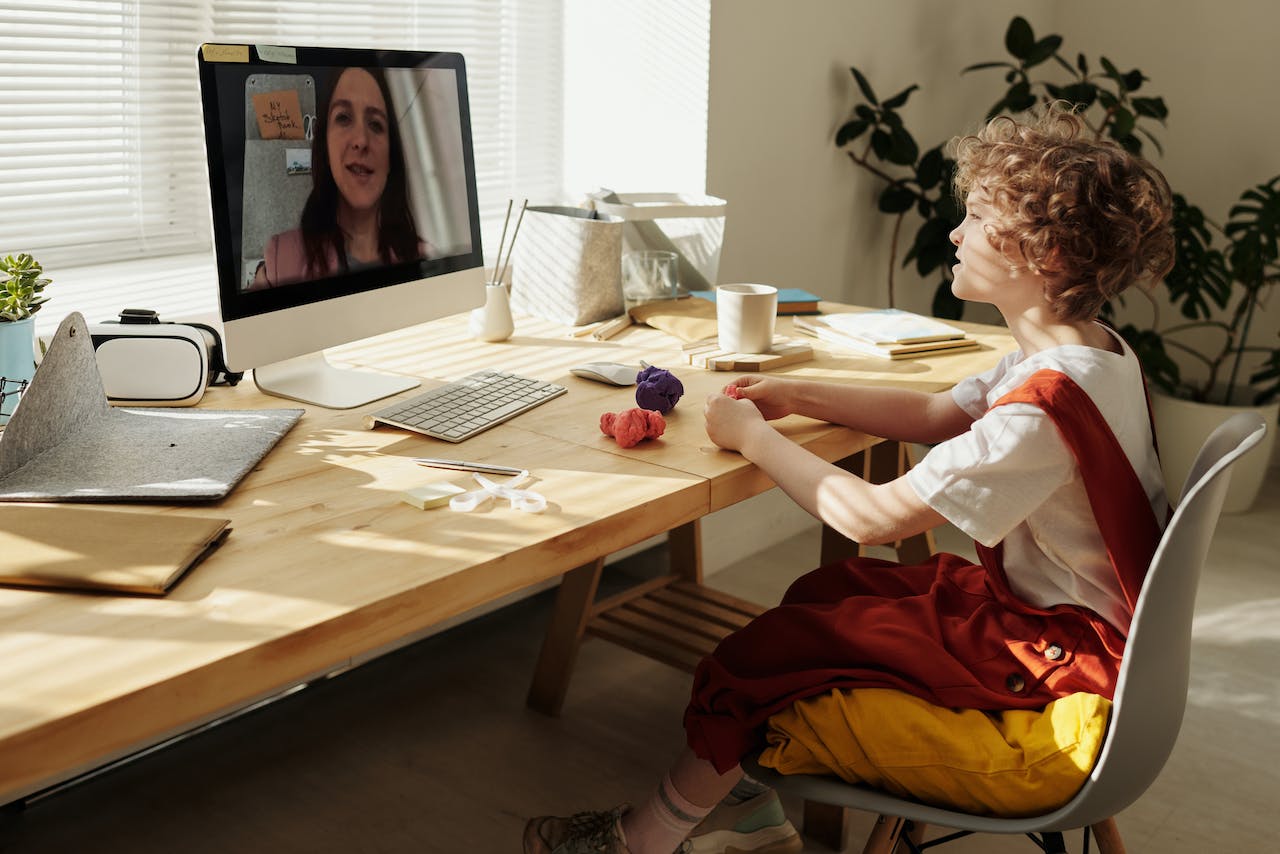In today’s digital age, children are spending more time in front of screens than ever before. While technology can offer educational benefits, excessive screen time can have negative effects on a child’s physical and mental health. As a parent, it’s essential to strike a balance. Here are seven tips to help you reduce screen time for kids and encourage healthier habits at home.
1. Setting Screen Time Boundaries
Establishing clear and consistent screen time boundaries for kids is crucial. Create a daily or weekly screen time schedule, and stick to it. Ensure your child understands the rules and consequences for exceeding these limits.
Children thrive on routine and structure. When you set specific screen time limits, you provide them with a sense of predictability. This predictability can reduce arguments and negotiations around screen time.
For example, you might decide that your child can have one hour of screen time after school and an additional hour in the evening. Make sure you communicate these rules clearly and ensure they are age-appropriate. Younger children typically require shorter screen time limits than teenagers.
When they understand the boundaries, children are more likely to accept them and find other activities to occupy their time.
2. Be a Role Model
Children often mimic their parents’ behavior. Be a positive role model by limiting your own screen time and engaging in offline activities. Show them that there are enjoyable alternatives to screens.
Your actions speak louder than words. If you’re constantly glued to your own devices, it’s challenging to convince your children to reduce their screen time. Be mindful of your own screen habits and make necessary adjustments.
Establish specific periods during which the entire family sets aside screens, limiting electronic device usage during meals or before bedtime. Utilize these moments for engaging in meaningful conversations, playing games, or reading together. When your children observe you giving precedence to real-world interactions over screens, they’re more inclined to do the same.
3. Establishing Screen-Free Zones
Designate specific areas within your home as screen-free zones to promote family interaction and facilitate a digital detox for children. These zones create physical boundaries that serve as reminders for when it’s time to unplug.
For example, the bedroom should be a haven for rest and relaxation, completely free of screen distractions. Remove TVs and electronic devices from bedrooms, encouraging your child to embrace a screen-free environment for reading or winding down before bedtime.
The dining room is another crucial screen-free zone for kids. Meal times are an excellent opportunity for family bonding and conversations. When screens are banned at the dining table, everyone can fully engage in connecting with each other. This practice enhances communication and strengthens family relationships while reducing screen time for kids.
4. Encourage Outdoor Activities
Encourage your child to spend time outdoors. Plan outdoor activities like hiking, biking, or playing sports. Fresh air and physical activity are essential for their well-being.
Outdoor activities provide numerous benefits for children. They promote physical fitness, expose children to nature, and encourage social interaction with friends and peers. Additionally, spending time in natural settings can reduce stress and anxiety.
Make outdoor play a regular part of your child’s routine. You can schedule family outings to parks, nature reserves, or local hiking trails. If possible, create a backyard play area with swings, a sandbox, or a trampoline to make outdoor play easily accessible.
Limiting screen time for kids will become more manageable when your child has engaging outdoor activities to look forward to. Encourage them to explore their interests, whether it’s playing soccer, riding a bike, or simply taking a nature walk.
5. Provide a Healthy Alternative to Screen Time
Offer a variety of engaging healthy alternatives to screen time, such as board games, arts and crafts, or reading. Make these activities readily available to your child, so they have appealing alternatives to screens.
Having a range of non-screen activities at your child’s disposal is essential. These activities not only divert their attention from screens but also stimulate their creativity and problem-solving skills.
Set up a dedicated area for arts and crafts, complete with supplies like colored pencils, markers, and paper. Stock your home with age-appropriate board games and puzzles that the whole family can enjoy. Create a cozy reading nook with a selection of books that cater to your child’s interests and reading level.
When your child expresses boredom, guide them toward these alternative activities. Encourage their curiosity and help them discover new hobbies and interests beyond screens.
6. Use Screen Time Wisely
When your child does use screens, ensure that the content is age-appropriate and educational. Explore educational apps, websites, and TV programs that align with their interests and promote learning.
Not all screen time is created equal. While it’s important to limit recreational screen time (e.g., video games and social media), there are valuable educational resources available that can support your child’s learning and development.
Identify high-quality educational apps and websites that align with your child’s age and academic needs. Many of these resources offer interactive lessons, quizzes, and engaging content that can supplement their education.
Additionally, when your child watches TV or movies, consider co-viewing and discussing the content afterward. This allows you to address any questions or concerns, reinforce positive messages, and make screen time for kids more interactive and educational.
7. Engage in Screen Time Together
Sometimes, it’s beneficial to engage in screen time together as a family. Watch educational documentaries, play educational video games, or engage in a shared movie night. This not only promotes bonding but also allows you to guide their digital experiences.
Shared screen time experiences can be valuable opportunities for family bonding and learning. Choose content that is both enjoyable and educational, such as nature documentaries, historical documentaries, or family-friendly educational games.
When you watch or play together, use the opportunity to have open discussions about the content. Ask questions, encourage critical thinking, and reinforce positive messages. This interactive approach not only enhances the educational value but also strengthens your connection with your child.
Keep in mind that the objective is not to eradicate screen time completely but to find a way of balancing screen time that fosters healthy development and well-rounded skills. Regularly assess your screen time rules and make adjustments as your child grows and their needs change. By following these tips, you can help your child develop a healthy relationship with screens and the world around them.
Bonus Tip: Use Joonify to Help With Screen Time Management
As a parent, you want to nurture your child’s interests and talents. Joonify, India’s leading intelligent assessment platform, can help you uncover your child’s unique passions and guide them towards meaningful activities beyond the screen.
Joonify’s comprehensive assessment evaluates your child’s cognitive development and identifies their strengths and areas of interest across various dimensions. With this valuable insight, you can explore extracurricular activities, hobbies, and educational pursuits that align with your child’s preferences. By engaging in activities they are genuinely passionate about, your child will naturally gravitate towards screen-free experiences.
Conclusion
In conclusion, reducing screen time for kids is an essential aspect of modern parenting. By setting clear limits, being a role model, creating screen-free zones, encouraging outdoor activities, providing alternative activities, using screen time wisely, and engaging in screen time together, you can guide your child toward a healthier, more balanced relationship with technology. Your efforts will contribute to their overall well-being and development, both now and in the future.
 0
0
 Share
Share



















Comments
No comments found.